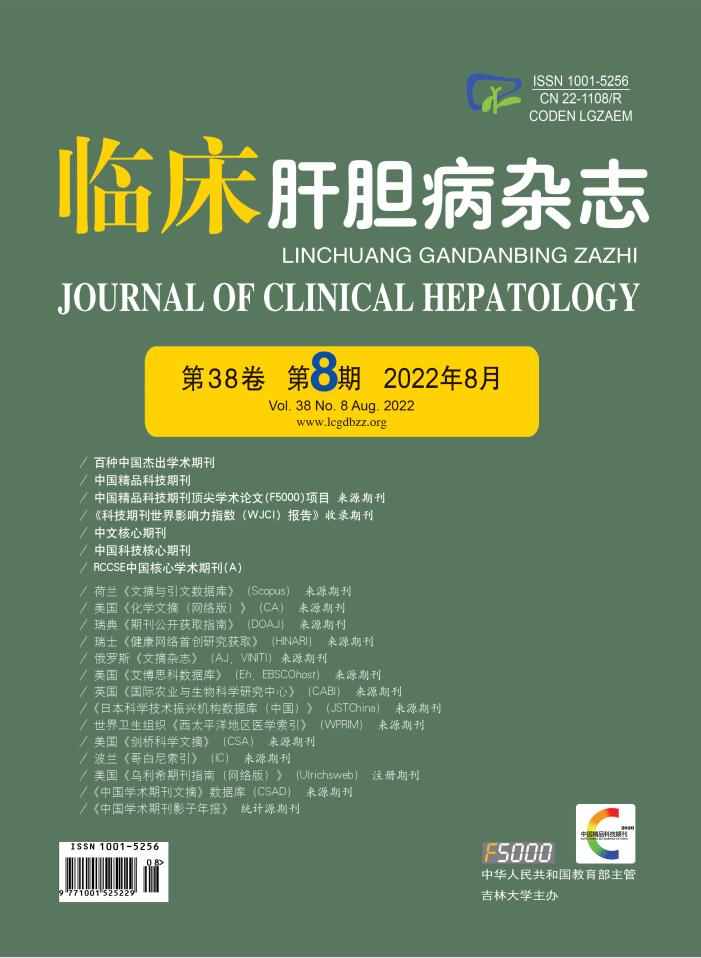| [1] |
AUGER C, ALHASAWI A, CONTAVADOO M, et al. Dysfunctional mitochondrial bioenergetics and the pathogenesis of hepatic disorders[J]. Front Cell Dev Biol, 2015, 3: 40. DOI: 10.3389/fcell.2015.00040. |
| [2] |
|
| [3] |
NISHIKAWA T, BELLANCE N, DAMM A, et al. A switch in the source of ATP production and a loss in capacity to perform glycolysis are hallmarks of hepatocyte failure in advance liver disease[J]. J Hepatol, 2014, 60(6): 1203-1211. DOI: 10.1016/j.jhep.2014.02.014. |
| [4] |
GO Y, JEONG JY, JEOUNG NH, et al. Inhibition of pyruvate dehydrogenase kinase 2 protects against hepatic steatosis through modulation of tricarboxylic acid cycle anaplerosis and ketogenesis[J]. Diabetes, 2016, 65(10): 2876-2887. DOI: 10.2337/db16-0223. |
| [5] |
ZHANG M, ZHAO Y, LI Z, et al. Pyruvate dehydrogenase kinase 4 mediates lipogenesis and contributes to the pathogenesis of nonalcoholic steatohepatitis[J]. Biochem Biophys Res Commun, 2018, 495(1): 582-586. DOI: 10.1016/j.bbrc.2017.11.054. |
| [6] |
SHIRAI T, NAZAREWICZ RR, WALLIS BB, et al. The glycolytic enzyme PKM2 bridges metabolic and inflammatory dysfunction in coronary artery disease[J]. J Exp Med, 2016, 213(3): 337-354. DOI: 10.1084/jem.20150900. |
| [7] |
MIDDLETON P, VERGIS N. Mitochondrial dysfunction and liver disease: role, relevance, and potential for therapeutic modulation[J]. Therap Adv Gastroenterol, 2021, 14: 17562848211031394. DOI: 10.1177/17562848211031394. |
| [8] |
GABBIA D, CANNELLA L, DE MARTIN S. The role of oxidative stress in NAFLD-NASH-HCC transition-focus on NADPH oxidases[J]. Biomedicines, 2021, 9(6): 687. DOI: 10.3390/biomedicines9060687. |
| [9] |
LEE N, CARELLA MA, PAPA S, et al. High expression of glycolytic genes in cirrhosis correlates with the risk of developing liver cancer[J]. Front Cell Dev Biol, 2018, 6: 138. DOI: 10.3389/fcell.2018.00138. |
| [10] |
LI S, LI J, DAI W, et al. Genistein suppresses aerobic glycolysis and induces hepatocellular carcinoma cell death[J]. Br J Cancer, 2017, 117(10): 1518-1528. DOI: 10.1038/bjc.2017.323. |
| [11] |
YE JH, CHAO J, CHANG ML, et al. Pentoxifylline ameliorates non-alcoholic fatty liver disease in hyperglycaemic and dyslipidaemic mice by upregulating fatty acid β-oxidation[J]. Sci Rep, 2016, 6: 33102. DOI: 10.1038/srep33102. |
| [12] |
SHANG RZ, QU SB, WANG DS. Reprogramming of glucose metabolism in hepatocellular carcinoma: Progress and prospects[J]. World J Gastroenterol, 2016, 22(45): 9933-9943. DOI: 10.3748/wjg.v22.i45.9933. |
| [13] |
LUNT SY, VANDER HEIDEN MG. Aerobic glycolysis: meeting the metabolic requirements of cell proliferation[J]. Annu Rev Cell Dev Biol, 2011, 27: 441-464. DOI: 10.1146/annurev-cellbio-092910-154237. |
| [14] |
|
| [15] |
LIU J, JIANG S, ZHAO Y, et al. Geranylgeranyl diphosphate synthase (GGPPS) regulates non-alcoholic fatty liver disease (NAFLD)-fibrosis progression by determining hepatic glucose/fatty acid preference under high-fat diet conditions[J]. J Pathol, 2018, 246(3): 277-288. DOI: 10.1002/path.5131. |
| [16] |
KORS L, RAMPANELLI E, STOKMAN G, et al. Deletion of NLRX1 increases fatty acid metabolism and prevents diet-induced hepatic steatosis and metabolic syndrome[J]. Biochim Biophys Acta Mol Basis Dis, 2018, 1864(5 Pt A): 1883-1895. DOI: 10.1016/j.bbadis.2018.03.003. |
| [17] |
SHANNON CE, RAGAVAN M, PALAVICINI JP, et al. Insulin resistance is mechanistically linked to hepatic mitochondrial remodeling in non-alcoholic fatty liver disease[J]. Mol Metab, 2021, 45: 101154. DOI: 10.1016/j.molmet.2020.101154. |
| [18] |
WANG T, CHEN K, YAO W, et al. Acetylation of lactate dehydrogenase B drives NAFLD progression by impairing lactate clearance[J]. J Hepatol, 2021, 74(5): 1038-1052. DOI: 10.1016/j.jhep.2020.11.028. |
| [19] |
SHIMADA K, CROTHER TR, KARLIN J, et al. Oxidized mitochondrial DNA activates the NLRP3 inflammasome during apoptosis[J]. Immunity, 2012, 36(3): 401-414. DOI: 10.1016/j.immuni.2012.01.009. |
| [20] |
XU F, GUO M, HUANG W, et al. Annexin A5 regulates hepatic macrophage polarization via directly targeting PKM2 and ameliorates NASH[J]. Redox Biol, 2020, 36: 101634. DOI: 10.1016/j.redox.2020.101634. |
| [21] |
SUN M, KISSELEVA T. Reversibility of liver fibrosis[J]. Clin Res Hepatol Gastroenterol, 2015, 39(Suppl 1): S60-S63. DOI: 10.1016/j.clinre.2015.06.015. |
| [22] |
WANG F, JIA Y, LI M, et al. Blockade of glycolysis-dependent contraction by oroxylin a via inhibition of lactate dehydrogenase-a in hepatic stellate cells[J]. Cell Commun Signal, 2019, 17(1): 11. DOI: 10.1186/s12964-019-0324-8. |
| [23] |
WAN L, XIA T, DU Y, et al. Exosomes from activated hepatic stellate cells contain GLUT1 and PKM2: a role for exosomes in metabolic switch of liver nonparenchymal cells[J]. FASEB J, 2019, 33(7): 8530-8542. DOI: 10.1096/fj.201802675R. |
| [24] |
HUANG T, LI YQ, ZHOU MY, et al. Focal adhesion kinase-related non-kinase ameliorates liver fibrosis by inhibiting aerobic glycolysis via the FAK/Ras/c-myc/ENO1 pathway[J]. World J Gastroenterol, 2022, 28(1): 123-139. DOI: 10.3748/wjg.v28.i1.123. |
| [25] |
RAO J, WANG H, NI M, et al. FSTL1 promotes liver fibrosis by reprogramming macrophage function through modulating the intracellular function of PKM2[J]. Gut, 2022. DOI: 10.1136/gutjnl-2021-325150.[Online ahead of print] |
| [26] |
ZHENG D, JIANG Y, QU C, et al. Pyruvate kinase M2 tetramerization protects against hepatic stellate cell activation and liver fibrosis[J]. Am J Pathol, 2020, 190(11): 2267-2281. DOI: 10.1016/j.ajpath.2020.08.002. |
| [27] |
ZHOU MY, CHENG ML, HUANG T, et al. Transforming growth factor beta-1 upregulates glucose transporter 1 and glycolysis through canonical and noncanonical pathways in hepatic stellate cells[J]. World J Gastroenterol, 2021, 27(40): 6908-6926. DOI: 10.3748/wjg.v27.i40.6908. |
| [28] |
BAN D, HUA S, ZHANG W, et al. Costunolide reduces glycolysis-associated activation of hepatic stellate cells via inhibition of hexokinase-2[J]. Cell Mol Biol Lett, 2019, 24: 52. DOI: 10.1186/s11658-019-0179-4. |
| [29] |
MATHUPALA SP, KO YH, PEDERSEN PL. Hexokinase-2 bound to mitochondria: cancer's stygian link to the "Warburg Effect" and a pivotal target for effective therapy[J]. Semin Cancer Biol, 2009, 19(1): 17-24. DOI: 10.1016/j.semcancer.2008.11.006. |
| [30] |
VAUPEL P, SCHMIDBERGER H, MAYER A. The Warburg effect: essential part of metabolic reprogramming and central contributor to cancer progression[J]. Int J Radiat Biol, 2019, 95(7): 912-919. DOI: 10.1080/09553002.2019.1589653. |
| [31] |
DEWAAL D, NOGUEIRA V, TERRY AR, et al. Hexokinase-2 depletion inhibits glycolysis and induces oxidative phosphorylation in hepatocellular carcinoma and sensitizes to metformin[J]. Nat Commun, 2018, 9(1): 446. DOI: 10.1038/s41467-017-02733-4. |
| [32] |
MATHUPALA SP, KO YH, PEDERSEN PL. Hexokinase-2 bound to mitochondria: cancer's stygian link to the "Warburg Effect" and a pivotal target for effective therapy[J]. Semin Cancer Biol, 2009, 19(1): 17-24. DOI: 10.1016/j.semcancer.2008.11.006. |
| [33] |
KANAI S, SHIMADA T, NARITA T, et al. Phosphofructokinase-1 subunit composition and activity in the skeletal muscle, liver, and brain of dogs[J]. J Vet Med Sci, 2019, 81(5): 712-716. DOI: 10.1292/jvms.19-0049. |
| [34] |
BARTRONS R, RODRÍGUEZ-GARCÍA A, SIMON-MOLAS H, et al. The potential utility of PFKFB3 as a therapeutic target[J]. Expert Opin Ther Targets, 2018, 22(8): 659-674. DOI: 10.1080/14728222.2018.1498082. |
| [35] |
LI S, DAI W, MO W, et al. By inhibiting PFKFB3, aspirin overcomes sorafenib resistance in hepatocellular carcinoma[J]. Int J Cancer, 2017, 141(12): 2571-2584. DOI: 10.1002/ijc.31022. |
| [36] |
van NIEKERK G, ENGELBRECHT AM. Role of PKM2 in directing the metabolic fate of glucose in cancer: a potential therapeutic target[J]. Cell Oncol (Dordr), 2018, 41(4): 343-351. DOI: 10.1007/s13402-018-0383-7. |
| [37] |
AZOITEI N, BECHER A, STEINESTEL K, et al. PKM2 promotes tumor angiogenesis by regulating HIF-1α through NF-κB activation[J]. Mol Cancer, 2016, 15: 3. DOI: 10.1186/s12943-015-0490-2. |
| [38] |
LUO W, HU H, CHANG R, et al. Pyruvate kinase M2 is a PHD3-stimulated coactivator for hypoxia-inducible factor 1[J]. Cell, 2011, 145(5): 732-744. DOI: 10.1016/j.cell.2011.03.054. |
| [39] |
WONG N, OJO D, YAN J, et al. PKM2 contributes to cancer metabolism[J]. Cancer Lett, 2015, 356(2 Pt A): 184-191. DOI: 10.1016/j.canlet.2014.01.031. |
| [40] |
FENG J, WU L, JI J, et al. PKM2 is the target of proanthocyanidin B2 during the inhibition of hepatocellular carcinoma[J]. J Exp Clin Cancer Res, 2019, 38(1): 204. DOI: 10.1186/s13046-019-1194-z. |
| [41] |
LIU B, JIN J, ZHANG Z, et al. Shikonin exerts antitumor activity by causing mitochondrial dysfunction in hepatocellular carcinoma through PKM2-AMPK-PGC1α signaling pathway[J]. Biochem Cell Biol, 2019, 97(4): 397-405. DOI: 10.1139/bcb-2018-0310. |
| [42] |
LING Y, YAN GJ, FENG F, et al. Association between cholesterol and liver regeneration and its significance and potential value in clinical treatment of liver failure[J]. J Clin Hepatol, 2022, 38(3): 708-713. DOI: 10.3969/j.issn.1001-5256.2022.03.044. |
| [43] |
WANG Y, LI X, CHEN Q, et al. Histone deacetylase 6 regulates the activation of M1 macrophages by the glycolytic pathway during acute liver failure[J]. J Inflamm Res, 2021, 14: 1473-1485. DOI: 10.2147/JIR.S302391. |
| [44] |
WANG XF, SHI QL, WANG MG, et al. Experimental study on effect of Jiedu Huayu granules on hepatic mitochondrial permeability transition in rats with acute liver failure[J]. Liaoning J Tradit Chin Med, 2017, 44(10): 2186-2189. DOI: 10.13192/j.issn.1000-1719.2017.10.056. |
| [45] |
ZHANG RZ, MAO DW, SUN KW, et al. Mechanism of action of Jieduhuayu granules for remission of oxidative stress in hepatocytes[J]. Chin J Hepatol, 2021, 29(12): 1188-1193. DOI: 10.3760/cma.j.cn501113-20210721-00349. |









 本站查看
本站查看





 DownLoad:
DownLoad: